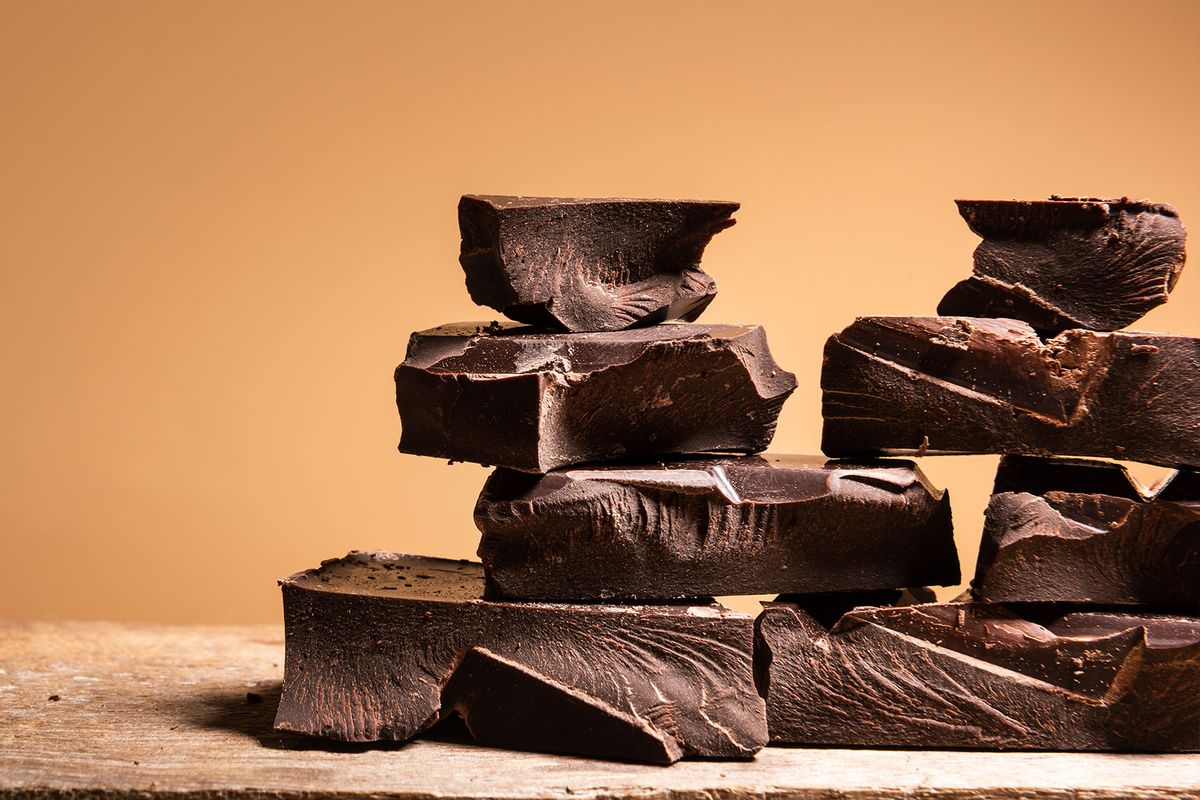When it comes to talking about chocolate, the words “healthy” and “sustainable” largely aren’t choice descriptors. But that may soon change, thanks to a group of Swiss scientists who reinvented the sweet treat as a more nutritious and eco-friendly product.
In a May study published in the peer-reviewed journal Nature Food, researchers at ETH Zürich repurposed the cocoa pod, which contains cocoa beans, the dried and fully fermented seeds of the cacao tree. When cocoa beans are harvested, cocoa pod husks — the outermost shell that constitutes up to 75% of the cocoa pod — are often discarded. Instead of tossing the cocoa pods, researchers preserved them, specifically extracting the endocarp — the innermost layer of the husks that surround the cocoa beans and pulp — then drying and milling it to create a powder (ECP). That powder was subsequently mixed and heated with cocoa pulp juice concentrate (CPJC) to create a fibrous gel that could replace the sugar in chocolate.
Because cocoa pod husks are rich in antioxidants, pectin, minerals, dietary fiber and proteins, the gel includes several health benefits, scientists explained. The gel touts more nutritional value than powdered crystalline sugar, which is what’s traditionally used in making chocolate.
“It [chocolate made using the gel] also has comparable sweet taste as traditional chocolate while offering improved nutritional value with higher fibre and reduced saturated fatty acid content,” the study noted.
In addition to being healthier, the chocolate produced with the fibrous gel comes with environmental benefits along with new revenue opportunities for farmers in cocoa-producing regions. The study found that in a lab, the new chocolate production method used six percent less land and water than conventional chocolate production. However, the former did increase planet-heating emissions by 12% because the process of making ECP required an extra drying step that used significant amounts of energy. The study suggested alternate drying methods, such as microwave drying or utilizing solar energy instead of diesel and grid energy, that lessened the environmental impacts observed in factory production.
Researchers ultimately came to a promising conclusion: “A cradle-to-factory life cycle assessment shows that large-scale production of this chocolate could reduce land use and global warming potential compared with average European dark chocolate production. The process also provides opportunities for diversification of farmers’ income and technology transfer, offering potential socio-economic benefits for cocoa-producing regions.”
In recent years, high demands for cocoa have spurred widespread environmental issues and poor labor practices. A 2017 report from Mighty Earth — a global advocacy organization centered on conserving at-risk regions — found that the world’s major chocolate companies (like Nestlé, Cadbury, and Mars) continue to purchase cocoa grown through the illegal deforestation of national parks and other protected forests. In the Ivory Coast and Ghana, the mass destruction of forests is primarily being fueled by growing demands within the chocolate industry. Collectively, both nations produce a combined 2.6 million tons of chocolate, which accounts for 60 percent of the world’s supply.
Per Mighty Earth’s report, Ghana lost 7,000 square kilometers of forest, or about 10 percent of its entire tree cover, between the years 2001 and 2014. Approximately 25 percent of that deforestation was linked to the cocoa industry, the report specified. Similarly, the Ivory Coast — which at one point, was densely covered by forests — lost seven of its 23 protected areas to cocoa production. Less than 11 percent of the country remains forested, and less than four percent remains densely forested, according to Ivorian government statistics and maps.
The report explained that producing conventional chocolate requires several steps: cocoa beans are first purchased by middlemen called “pisteurs,” who transport the beans to villages and towns across a specific cocoa-growing region. The beans are then sold to another group of middlemen called “cooperatives,” who sell them to cocoa traders, who ship the beans to major chocolate companies across Europe and North America.
Although many chocolate corporations have implemented ethical chocolate standards in the past decade, deforestation rates remain high while cocoa farmers’ wages remain low. Some smaller cocoa businesses have found ways to sustainably produce cocoa and prioritize their workers. And even though major corporations claimed to follow suit in prioritizing sustainability, several big names were recently caught doing the contrary.
Want more great food writing and recipes? Subscribe to Salon Food’s newsletter, The Bite.
Back in January, Rainforest Alliance and the Hershey Company were sued for “false and deceptive claims about child labor, labor practices, and deforestation,” according to a report in Sierra, the official magazine of the Sierra Club. The class action lawsuit, filed in the US District Court Northern District of Illinois, claimed that Rainforest Alliance’s certification standards are incapable of ensuring that Hershey’s chocolate products (both organic and inorganic) are ethically sourced or sustainable. The suit further accused Rainforest Alliance of misleading consumers via its ecolabels, which are placed on products that are made without child labor. In 2018, the Rainforest Alliance joined forces with UTZ, a company that has been found to supply cocoa using child labor. Even before the merge, cases of child labor at Rainforest Alliance-certified farms were documented. Hershey Company currently sources its cocoa from both the Ivory Coast and Ghana, where approximately 1.56 million children are working on cocoa farms, per the Department of Labor.
The complaint added that “Rainforest Alliance is paying well below the necessary living income to farmers for its certified cocoa.” It also called out the organization for utilizing an “assess and address” model that fixes specific issues only after they’ve been made public.
Sustainable chocolate standards and methods, like the one presented by researchers at ETH Zürich, hope to remedy the cocoa supply chain, ensuring ethical standards and the fair treatment of workers are commonplace within the greater industry.
“As the world races towards a more circular and sustainable economy, innovative technologies in the food sector are required,” the study noted. “Food utilization needs to be maximized so that associated environmental burdens can be reduced.”
Read more
about the chocolate industry:
